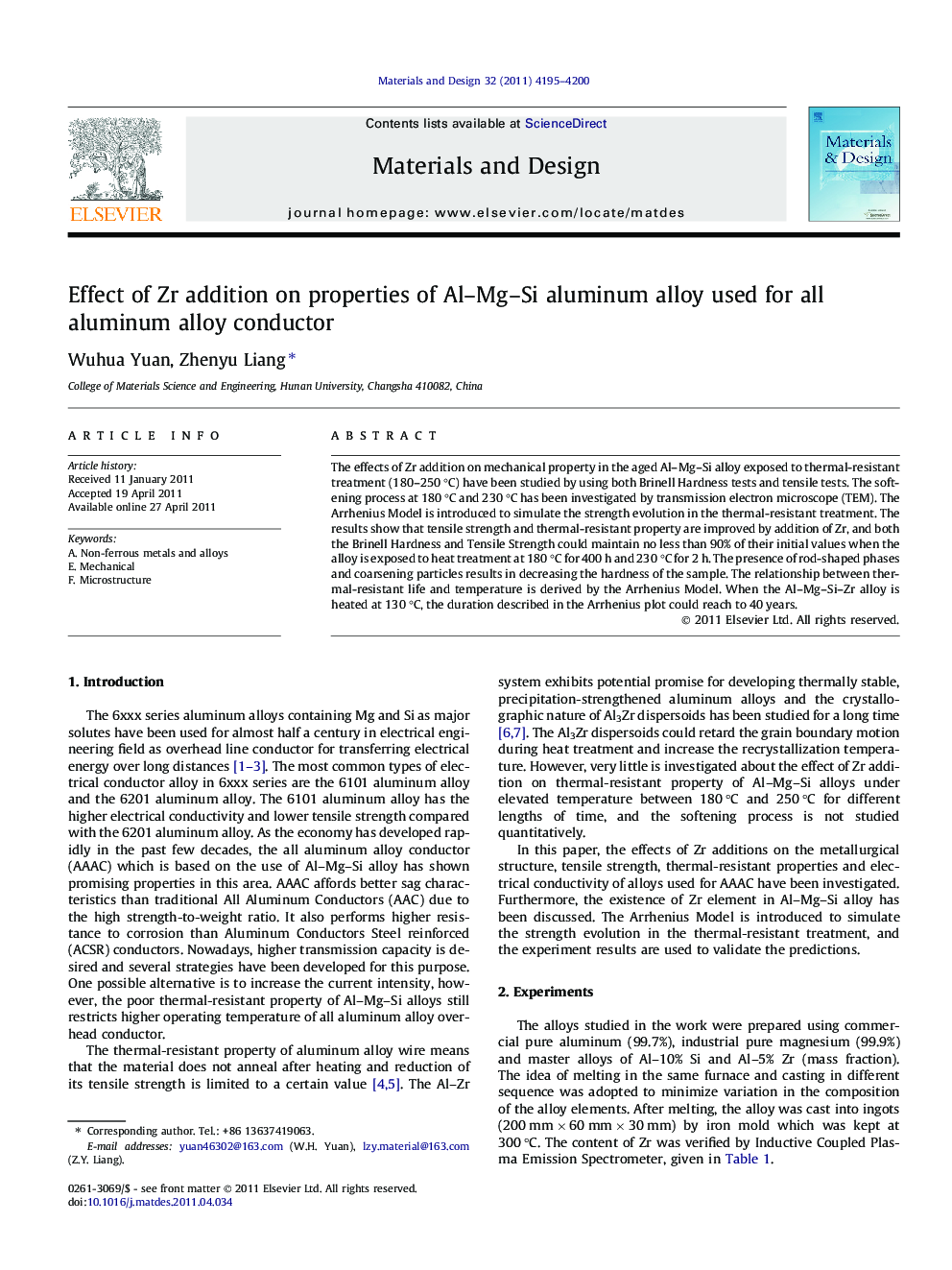| Article ID | Journal | Published Year | Pages | File Type |
|---|---|---|---|---|
| 831340 | Materials & Design (1980-2015) | 2011 | 6 Pages |
The effects of Zr addition on mechanical property in the aged Al–Mg–Si alloy exposed to thermal-resistant treatment (180–250 °C) have been studied by using both Brinell Hardness tests and tensile tests. The softening process at 180 °C and 230 °C has been investigated by transmission electron microscope (TEM). The Arrhenius Model is introduced to simulate the strength evolution in the thermal-resistant treatment. The results show that tensile strength and thermal-resistant property are improved by addition of Zr, and both the Brinell Hardness and Tensile Strength could maintain no less than 90% of their initial values when the alloy is exposed to heat treatment at 180 °C for 400 h and 230 °C for 2 h. The presence of rod-shaped phases and coarsening particles results in decreasing the hardness of the sample. The relationship between thermal-resistant life and temperature is derived by the Arrhenius Model. When the Al–Mg–Si–Zr alloy is heated at 130 °C, the duration described in the Arrhenius plot could reach to 40 years.
► The effects of Zr addition on thermal-resistant properties of Al-Mg-Si alloy were studied quantitatively. ► The microstructural variation of the precipitates during the heat treatment (180 °C– 250 °C) was studied by TEM. ► The Arrhenius Model was introduced to simulate the strength evolution in the thermal-resistant treatment.
